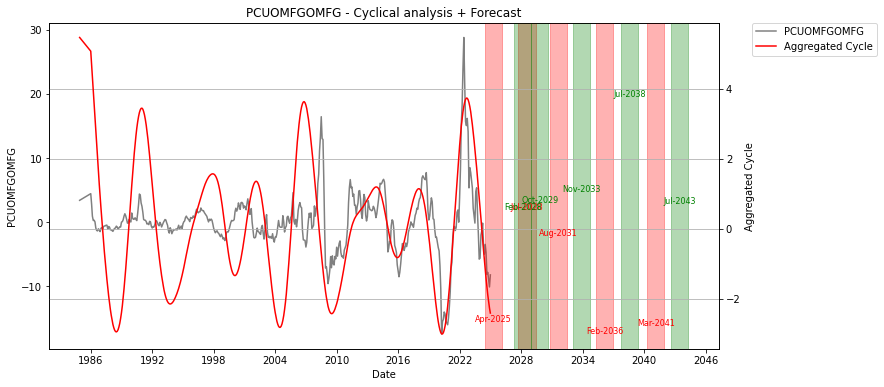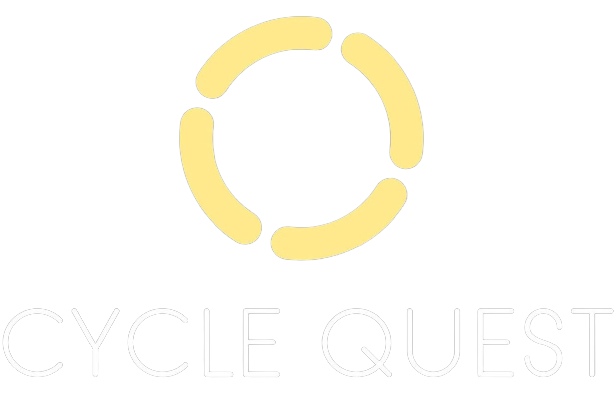The headlines lately have painted a comforting story: inflation is cooling, interest rate hikes might pause, and consumers can breathe easy again. Wall Street is going through a momentary bloodbath due to the fear of a Trumpcession with the tariffs drama. Policymakers in the US appear to believe they’ve finally conquered inflation. But before we declare victory, let’s remember a fundamental truth: cycles don’t care about headlines or sentiment. They move in predictable waves—and right now, the next wave is about to break.
Producer Price Index (PPI), an essential leading indicator for inflation trends, is approaching a cyclical bottom in April, according to clear signals from cyclical analysis:

[in the picture, the red represents expected bottoms, and the green areas are the predicted tops]
If history offers any lesson—and it usually does—this upcoming bottom in producer prices signals the beginning of another inflationary climb, not its end.
The relationship between producer prices and consumer inflation (CPI) is simple economics: costs that producers bear today inevitably show up as higher consumer prices tomorrow. In recent months, inflation has cooled, providing consumers and policymakers alike a false sense of comfort. But this quiet phase is temporary, and the predictable rhythm of economic cycles is already quietly sounding the alarm.
Historically, the interval between a bottom in PPI and a subsequent rise in consumer prices is short—often only a matter of months. This lag creates a critical window for action, but also makes complacency dangerous. Businesses lulled by stable input costs could be blindsided by rising prices, while policymakers risk falling behind once again, forced into abrupt policy shifts that disrupt markets and consumer confidence.
Consider this a friendly but urgent warning: by summer, expect conversations to shift dramatically from complacency about inflation to mounting concern. With producer prices set to climb after April, consumer prices will inevitably follow (although, as we showed yesterday, this won’t likely happen before 2026), reigniting debates about interest rates, spending cuts, and economic stability. Investors ignoring this reality may soon find themselves caught off-guard.
Policymakers have a narrowing window to prepare for what’s coming next. They would be wise to pay attention now, instead of scrambling to catch up later. But if history tells us anything, we shouldn’t hold our breath.

